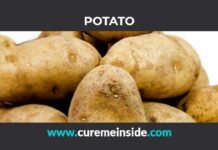Chitrak (Plumbago zeylanica)
Chitrak, also known as Ceylon leadwort, is a commonly used plant in traditional medicine and is classified as a Rasayana in Ayurveda.(HR/1)
Chitak roots and root bark are commonly used to treat digestive issues such as diarrhoea, loss of appetite, and indigestion. Externally, a paste made from the leaves is effective for rheumatic discomfort and itchy skin. Higher doses might sometimes have an irritating and intoxicating impact. It may cause burning of the tongue, throat, stomach, and other parts of the body in some situations.
Chitrak is also known as :- Plumbago zeylanica, Agni, Vahni, Jvalanakhya, Krsanu, Hutasa, Dahana, Hutabhuk, Sikhi, Agiyachit, Agnachit, Chita, Lead war, Chitrakmula, Chira, Chitra, Chitramula, Vahni, Bilichitramoola, Shatranja, Vellakeduveli, Thumpokkoduveli, Chitraka, Chitamula, Chitoparu, Chitramoolam, Kodiveli, Chitramulam, Sheetraj Hindi, Cheetah
Chitrak is obtained from :- Plant
Uses and benefits of Chitrak:-
As per several scientific studies, uses and benefits of Chitrak (Plumbago zeylanica) are mentioned as per below(HR/2)
- Indigestion : Indigestion is referred to as Agnimandya in Ayurveda, and it is caused by a Pitta dosha imbalance. When food is taken but not digested due to a lack of Mand agni (poor digestive fire), Ama (toxic residues in the body due to incorrect digestion) forms, causing indigestion. Indigestion is caused by an inadequate digestion process, to put it another way. Chitrak’s Deepan (appetiser) and Pachan (digestion) characteristics aid to treat indigestion by digesting the Ama (toxic residues in the body owing to incorrect digestion). It even aids in the Pitta dosha’s balance.
- Piles : Piles have become a widespread condition as a result of chronic constipation as a result of today’s sedentary lifestyle. Constipation affects all three doshas, but especially the Vata dosha. If neglected or untreated, an inflamed Vata creates poor digestive fire, resulting in continuous constipation, which can lead to pain and swelling around the anal region, as well as the creation of pile mass. Chitrak’s Rechana (laxative) property aids in constipation treatment, and its pain-relieving as well as Vata and Pitta dosha balancing properties aid in the reduction of uncomfortable Piles.
- Obesity : Obesity is a disorder in which indigestion causes harmful leftovers in the body due to incorrect digestion to accumulate in the form of fat. This disorder can also be caused by constipation, which causes an imbalance of Meda dhatu (abnormalities in adipose tissue) and obesity. Chitrak’s Deepan (appetiser) and Pachan (digestive) characteristics aid to minimise fat formation. Due to its Rechana (laxative) characteristic, it also aids in the management of constipation, hence assisting in the management of Obesity.
- Sexual weakness : Sexual weakness is a condition in which a person experiences either libido loss (poor sexual desire in one or both partners) or premature semen release (in case of male partner). This ailment is frequently caused by a Vata dosha imbalance. Due to its Vata balancing and aphrodisiac characteristics, Chitrak aids in the management of sexual weakness.
- Rheumatic : Rheumatic pain is pain that occurs as a result of a Vata dosha imbalance in Rheumatoid arthritis. Due to its Vata balancing properties, applying Chitrak leaves paste to the affected area helps to treat rheumatic pain.
- Scabies : Scabies, also known as Pama in Ayurveda, is caused by a Kapha-Pitta dosha imbalance. Because of its Pitta and Kapha balancing characteristics, applying Chitrak juice to the affected area can help relieve itching and discomfort.
Video Tutorial
Precautions to be taken while using Chitrak:-
As per several scientific studies, below precautions should to be taken while taking Chitrak (Plumbago zeylanica)(HR/3)
- certain constituent (plumbagin) present in Chitrak might be considered to be toxic if taken in high doses. So it is generally advisable to consult a physician before taking Chitrak.
Special precautions to be taken while taking Chitrak:-
As per several scientific studies, below special precautions should to be taken while taking Chitrak (Plumbago zeylanica)(HR/4)
- Pregnancy : Chitrak should be avoided during pregnancy since it causes uterine contractions, which might lead to miscarriage. As a result, it is typically advised to avoid Chitrak during pregnancy or visit a physician before doing so.
How to take Chitrak:-
As per several scientific studies, Chitrak (Plumbago zeylanica) can be taken into the methods mentioned as per below(HR/5)
How much Chitrak should be taken:-
As per several scientific studies, Chitrak (Plumbago zeylanica) should be taken into the amounts mentioned as per below(HR/6)
Side effects of Chitrak:-
As per several scientific studies, below side effects need to be taken into consideration while taking Chitrak (Plumbago zeylanica)(HR/7)
- Diarrhea
- Skin rashes
Questions asked frequently Related to the Chitrak:-
Question. What is the shelf life of Chitrak?
Answer. Chitrak powder has a storage life of 6-12 months, whereas capsules or tablets have a shelf life of 2-3 years.
Question. How to preserve Chitrak?
Answer. Chitrak should be wrapped in permeable gunny bags when it is raw and dry. Insects, ants, and other substances should never be allowed to cause harm. During the rainy season, keep the Chitrak stored away from moisture.
Question. Does Chitrak help manage the central nervous system (CNS)?
Answer. Because of its muscle relaxant properties, Chitrak has a considerable effect on the central nervous system (CNS). It reduces CNS hyperactivity while also lowering anxiety levels.
Vata dosha is in charge of the nervous system. Because of its Vata balancing and Medhya (brain tonic) qualities, Chitrak aids in CNS regulation. This aids in the treatment and prevention of neural illnesses, as well as providing nourishment to the nerves.
Question. How is Chitrak helpful in managing ulcers?
Answer. Chitrak’s significant antioxidant activity aids in the treatment of ulcers. Antioxidants aid in the prevention of ulcer development induced by a variety of ulcer-causing substances. Various scientific research also suggest that it lowers stomach wall damage and avoids ulcer formation.
Ulcers are mainly caused by a lack of or inadequate digestion. Chitrak’s Deepan (appetiser) and Pachan (digestion) characteristics aid in the treatment of ulcers. This aids in digestion and prevents ulcers from forming.
Question. Is Chitrak good for Leishmania infection?
Answer. Leishmania infection is a parasitic infection that affects various internal organs and is caused by Leishmania parasites. Chitrak’s anti-parasitic properties aid in the treatment of Leishmania infection. It aids in the synthesis of an enzyme that kills parasites, therefore preventing infection.
Question. Does Chitrak helps in atherosclerosis?
Answer. Yes, Chitrak may aid with atherosclerosis by preventing fatty material accumulation in the arteries. This regulates blood flow in the body and prevents atherosclerotic plaques from forming.
Atherosclerosis is a disorder in which toxins collect in the arteries in the form of fatty substances. It is commonly observed when certain illnesses, such as hypertension or excessive cholesterol, are ignored over an extended period of time. Chitrak’s Deepan (appetiser), Pachan (digestitheon), and lekhan (scraping) characteristics assist regulate hypertension and excessive cholesterol, which are both caused by an accumulation of toxins in the form of Ama. This reduces the symptoms of Atherosclerosis by preventing hypertension or high cholesterol.
Question. What dietary precautions need to be taken while using Chitrak?
Answer. Avoiding potatoes, root vegetables, tubers, and greasy foods, as well as increasing water consumption between meals, is recommended for greater Chitrak absorption in the body.
Question. Does Chitrak help heal wounds?
Answer. Because of its anti-inflammatory and antibacterial characteristics, Chitrak ointment aids wound healing. Chitrak has components that aid in wound contraction and closure, collagen production, and the generation of new skin cells. It also lowers the likelihood of infection in the wound. Chitrak’s antioxidant action aids in the battle against free radicals in the wound, preventing cell damage and speeding wound healing.
Because of its anti-inflammatory and Vata-balancing characteristics, Chitrak may aid in wound healing. It aids in the reduction of edoema in the afflicted area as well as pain in the wound.
Question. Does Chitrak help in managing skin diseases?
Answer. Chitrak paste’s wound healing and antibacterial capabilities aid in the treatment of skin ailments. It helps to prevent bacterial infections and a variety of skin problems.
Yes, Chitrak’s Sothhar (anti-inflammatory) property, which helps reduce swelling, may be beneficial in the treatment of skin problems. Furthermore, the Rooksha (dry) characteristic aids in the absorption of excess oil from the skin, while the Rasayana (rejuvenating) property aids in the rejuvenation and maintenance of the skin’s overall health.
Question. Is Chitrak helpful in inflammatory conditions?
Answer. Because of its anti-inflammatory properties, Chitrak is beneficial in cases of inflammation. It helps to relieve inflammatory diseases by inhibiting the function of certain inflammation-causing molecules in the body.
Chitrak’s anti-inflammatory and Vata-balancing effects make it beneficial in inflammatory diseases. It aids in the management of inflammation and the alleviation of symptoms such as discomfort in the affected area.
SUMMARY
Chitak roots and root bark are commonly used to treat digestive issues such as diarrhoea, loss of appetite, and indigestion. Externally, a paste made from the leaves is effective for rheumatic discomfort and itchy skin.




